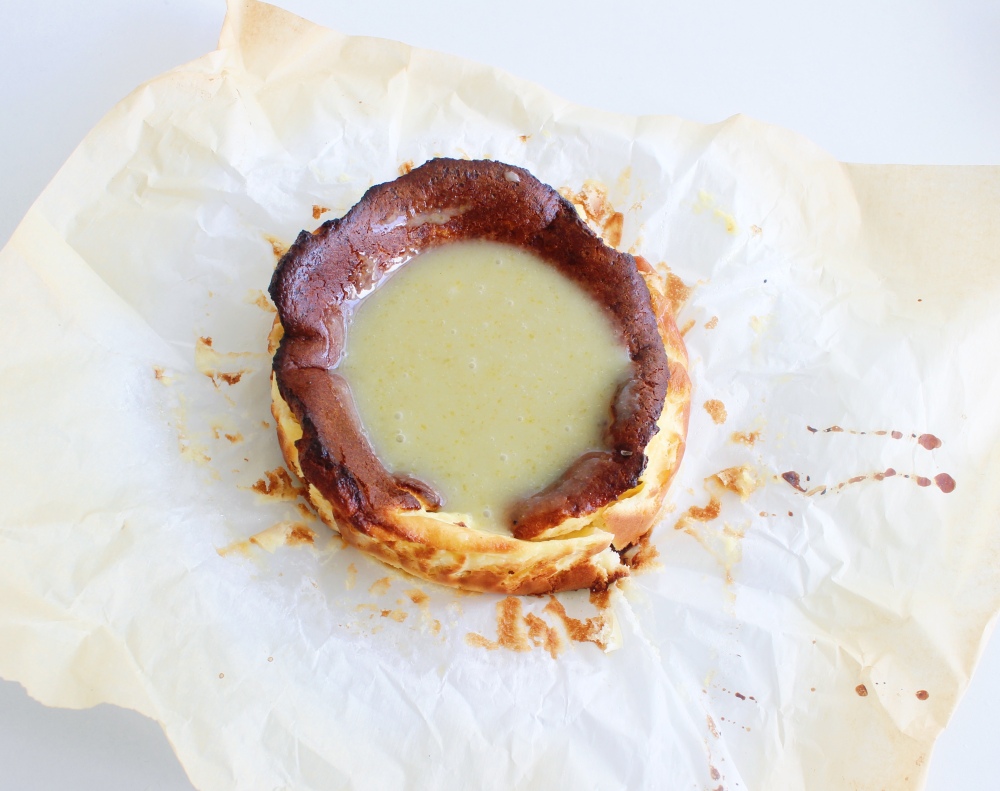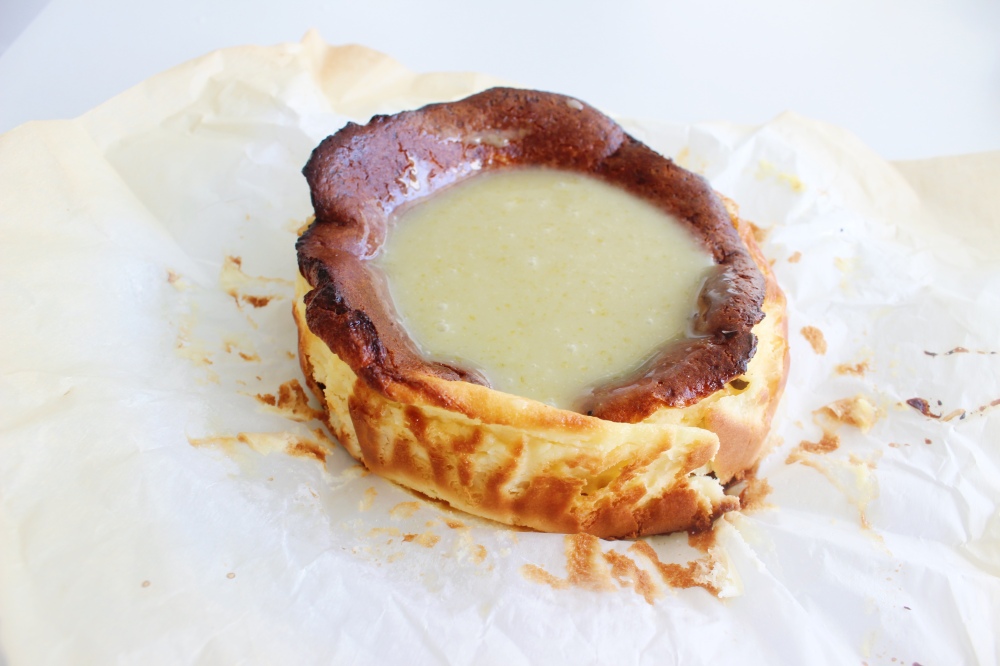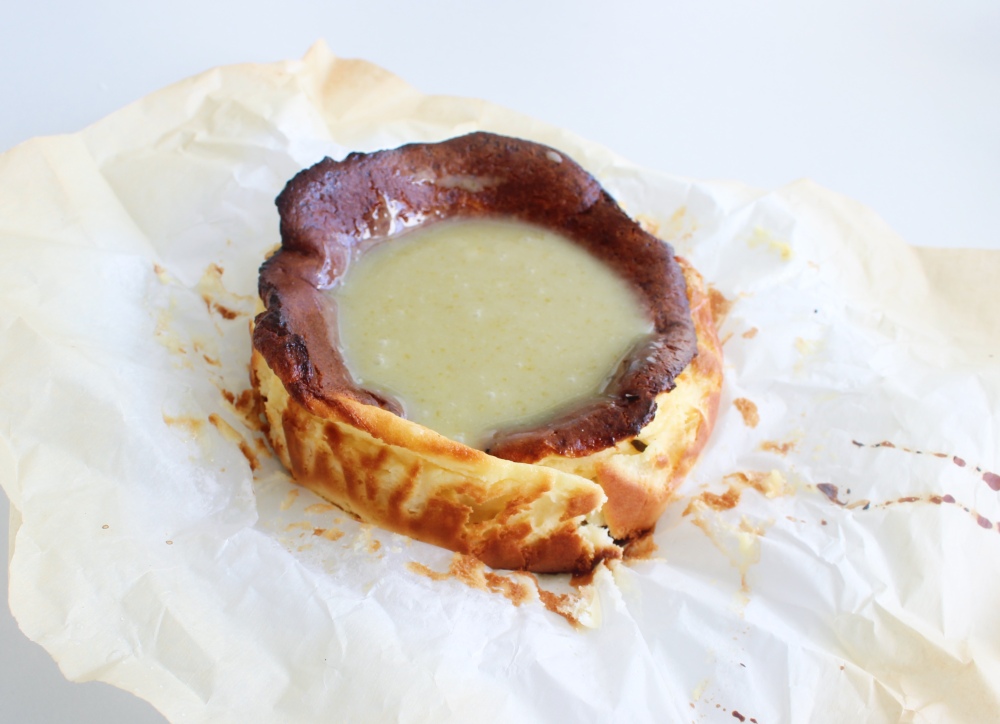I have previously made a larger basque cheesecake recipe using Meyer lemon, and tried to split it in half. While it was not bad by any means, I felt like the cheesecakes were very flat, and needed to be baked into a singular cheesecake to have the appropriate height to width ratio. Funnily enough, when I referenced that recipe for writing and executing this one, I accidentally forgot the step in the previous recipe where I split the batter across for two cheesecakes, not one, and baked all of my batter into one cheesecake. The hilarious part of this was that this cheesecake came out perfectly despite using the exact same baking time and temperatures, and the previous recipe still managed to produce two properly baked cheesecakes as well. However, there is an explanation for that, and it came down to two switches that I made with the ingredients. In the Meyer lemon version, I used heavy cream and mascarpone cheese, both of which have really high fat content. For this recipe, I used goat’s milk and regular cream cheese, which have a lower fat content. The thing about baking with fat is that it adds moisture to a baked item, and that in turn extends the baking time. So in this case, because I used both mascarpone and heavy cream for the lemon version, it effectively increased the baking time for that particular recipe, causing cheesecakes made with half the amount of batter to take just as long as a single cheesecake in this recipe. Science is fun is all I have to say about that.

For the recipe itself, it is pretty straightforward, minus the additions of goat milk and lime juice and zest. The cornstarch acts as a binding agent, and since I am using goat milk instead of heavy cream, that actually lowers the overall baking time for this cheesecake, despite it being 6 inches in diameter, and being fairly tall. With this kind of cheesecake, it is meant to be craggily and ugly around the edges, and you typically want the top to be really dark, and at times, the cheesecake might even sink down dramatically in the middle, and kind of take down the edges of the cake with it. My solution if the sinkage is glazing the top of the cheesecake with a lime curd. I went with lime specifically because my friend Karen gave me some home-grown ones, and I wanted to use them in something fun. So in this case, I used the zest and juice in the cake itself, but also I made a glaze with the rest, and spread that on top of the cheesecake, just so that the tartness of the lime curd would cut through any richness in the cheesecake. The thing about basque cheesecake is that it is decadent, so the usage of lime helps to balance that out, and make each bite of this cheesecake balanced and pleasant. The goat milk adds a delicious tang as well, playing off of the tang in the lime as well. While some curds use egg yolks, I went with a cornstarch-thickened lime curd so that the recipe stays very simple, and it limits the possibility for mistakes. When you’re working with eggs, they can be very delicate and could scramble easily, so using the cornstarch-based curd effectively eliminates any concerns for that, making this a fairly beginner-friendly recipe!

For 1 6-inch cheesecake:
8oz cream cheese
1 tsp cornstarch
1/3 cup granulated sugar
1 tsp vanilla extract
a pinch of salt
2 eggs
1/2 cup goat milk
juice and zest from 1 lime
In a mixing bowl, whisk together the cream cheese, cornstarch, sugar, vanilla, and salt first. Then mix in the eggs, one at a time. Finally, mix in the goat milk, and lime juice and zest. Line a 6-inch ring mold with parchment, and pour in the cheesecake mixture. Bake at 425 degrees F for 45 minutes, then transfer straight to the freezer for an hour before attempting to unmold.
For the lime curd:
Juice and zest from 3 limes
1 tbsp cornstarch
a pinch of salt
1/4 cup granulated sugar
1 tbsp coconut oil or unsalted butter
In a pot, bring everything to a simmer over medium-high heat, while whisking continuously. Once the mixture thickens to the point of clinging to the sides of your whisk, pass it through a sieve to remove any lumps, and allow it to fully cool before attempting to spread on top of the cheesecake.
